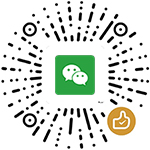
Mindful Design: A Survival Guide for Responsible Product Designers (Design Thinking)
by 作者: Scott Riley (Author)
Publisher Finelybook 出版社: Apress
Edition 版本: 2nd ed.
Publication Date 出版日期: 2024-04-17
Language 语言: English
pages 页数: : 364 pages
ISBN-13 书号: 9798868801426
Book Description
Learn to create seamless designs backed by a responsible understanding of the human mind. This new edition is fully updated and reworked to employ a realistic, challenging, and practical approach to interface design, presenting state of the art scientific studies in behavioral sciences, interface design and the psychology of design. All with modern, up-to-date examples and screenshots. The practical portion of this edition has been completely reworked, giving you the chance to follow along with a real, proven design process that has produced several successful products imbued with the principles of mindful, responsible design.
You'll examine how human behavior can be used to integrate your product design into lifestyle, rather than interrupt it, and make decisions for the good of those that are using your product. You will also learn about the neurological aspects and limitations of human vision and perception; about our attachment to harmony and dissonance; and about our brain’s propensity towards pattern recognition and how we perceive the world around us. In the second half of the book, you’ll follow along with the key phases of a design project, implementing what you have learned in an end-to-end, practical setting.
Design is a responsibility, but not enough designers understand the human mind or the process of thought. Mindful Design, Second Edition introduces the areas of brain science that matter to designers, and passionately explains how those areas affect each human’s day-to-day experiences with products and interfaces, providing a battle-tested toolkit to help you make responsible design decisions.
What You'll Learn
- Review how attention and distraction work and the cost of attentional switching
- Use Gestalt principles to communicate visual grouping
- Ensure your underlying models make sense to your audience
- Use time, progression, and transition to create a composition
- Carefully examine controlling behavior through reductionist and behaviorist motivation concepts
- Apply the theoretical knowledge to practical, mindful interface design
Who this book is for
The primary audience for this book is professional designers who wish to learn more about the human mind and how to apply that to their work. The book is also useful for design-focused product owners and startup founders who wish to apply ethical thinking to a team, or when bootstrapping their products. The secondary audience is design students who are either studying a ‘traditional’ visual design course, or a UX/interaction design course who have a desire to learn how they might be able to apply mindful design to their early careers. Finally, a tertiary audience for this book would be tutors involved in teaching design, or peripheral, courses who may wish to incorporate its teachings into their lectures, workshops or seminars.
From the Back Cover
Learn to create seamless designs backed by a responsible understanding of the human mind. This new edition is fully updated and reworked to employ a realistic, challenging, and practical approach to interface design, presenting state of the art scientific studies in behavioral sciences, interface design and the psychology of design. All with modern, up-to-date examples and screenshots. The practical portion of this edition has been completely reworked, giving you the chance to follow along with a real, proven design process that has produced several successful products imbued with the principles of mindful, responsible design.
You'll examine how human behavior can be used to integrate your product design into lifestyle, rather than interrupt it, and make decisions for the good of those that are using your product. You will also learn about the neurological aspects and limitations of human vision and perception; about our attachment to harmony and dissonance; and about our brain’s propensity towards pattern recognition and how we perceive the world around us. In the second half of the book, you’ll follow along with the key phases of a design project, implementing what you have learned in an end-to-end, practical setting.
Design is a responsibility, but not enough designers understand the human mind or the process of thought. Mindful Design, Second Edition introduces the areas of brain science that matter to designers, and passionately explains how those areas affect each human’s day-to-day experiences with products and interfaces, providing a battle-tested toolkit to help you make responsible design decisions.
You will:
- Review how attention and distraction work and the cost of attentional switching
- Use Gestalt principles to communicate visual grouping
- Ensure your underlying models make sense to your audience
- Use time, progression, and transition to create a composition
- Carefully examine controlling behavior through reductionist and behaviorist motivation concepts
- Apply the theoretical knowledge to practical, mindful interface design
About the Author
Scott Riley is an independent designer specializing in interface and interaction design. He has written extensively and spoken at conferences around the world on the intersection of cognitive science and design. You can find details of all his work on his website, scott.is.
 finelybook
finelybook
